picture
Recently, I have read a lot of long articles about how Web3 can help brand marketing, and I have gained a lot. But sharing it with friends who are still working on the front line of the brand, the feedback received is: I still don’t understand it, so you just tell me what to do, how to do it, is there any successful case for reference? Does it work?
This reminds me that for many web2 marketers, the learning threshold of Web3 is indeed a bit high, with many concepts. Talking too much about the original things of Web3 seems to have become a kind of metaphysics. It made people afraid to touch it, and didn't know how to touch it. I heard a lot of content, but when I went to the client to make a proposal, it finally became: send an nft, make an avatar.
Therefore, for traditional marketers, there may still be a need for marketing Web2.5 guidance at the moment: don’t say it’s too deep, don’t say it’s too big, just say it’s clear at a glance, so that people who see Web2 don’t think it’s too powerful, but they still feel a little Deja vu - well, isn't this the same set we played back then? It's just a different shell, it's called Web3!
With this feeling, the goal has been achieved - Web2Web3 is not important, it is still selling goods in another place, it is important to be able to sell goods!
Therefore, in this article, I want to use a very practical way to make a simple guide for everyone.
I hope that after reading this, when reporting to the boss, the boss can understand it; when reporting to the customer, the customer can pay the bill; if you are your own boss, you will also have the motivation to lay out Web3.
first level title
![]()
Full-text catalog:
1. Why do traditional brands need to do NFT marketing?
2. How can traditional brands use NFT marketing?
1) Cooperate with blue-chip/strongly labeled/strongly stylized NFTs to form a strong alliance
2) Link NFT with physical goods
3) NFT as a member pass card
4) NFT+ games create more gameplay for brands
5) Second Empowerment of NFT - Cultivate Brand Loyalty
6) Use NFT for brand community building
3. It’s time to act on NFT marketing
first level title

Why do traditional brands need to do NFT marketing?
[New users] Among the audience of NFT, there are new users that brands need to capture
Among the NFT audiences, there are audiences that brands have not been able to reach before - encryption enthusiasts and more and more Generation Z people who are accustomed to participating in the Web3 world; brands can reach more people who were not in the audience before through NFT marketing.
【New Ideas】New ideas are needed in the current boring marketing with few new ideas
The existing digital marketing market has entered a dull stage with little new ideas, and the market situation is not optimistic in the general environment, and fresher ideas and content are needed to stimulate consumers.
[New Image] Good NFT marketing can have the effect of brand renewal
The renewal of traditional brands has been explored deeply in the Internet age. The trendy sense of NFT itself and the culture it represents can help brands quickly gain the favor of the Generation Z crowd.
[New Community] In the coming Web3 era, brands need to build a community with more presence
The co-creation attribute of the Web3 community has shown its strength. In the Web3 era that is already on the road, brands need to break the boundaries between communities and brands, have better communication mechanisms, and have a community atmosphere that can promote communication.
[New Era] The era has moved forward irreversibly, and brands need to try earlier and accumulate experience
Nowadays, many big brands have established Web3 departments or formulated Web3 strategies. On the road of brand + Web3, perhaps it is not a question of "doing it or not", but a question of "doing it sooner or later".
[New growth] NFT marketing can become a new growth point for brands
first level title

secondary title
1) Cooperate with blue-chip/strongly labeled/strongly stylized NFTs to form a strong alliance
Cooperating with blue-chip NFT, borrowing the strong influence of NFT itself, can affect both Web3er and general audiences.
Case reference:
With the help of the boring ape #4102 joint marketing, China Lining released clothing with the NFT image printed on it, and held a flash mob event in Sanlitun; and made many second creations on the boring ape image, allowing the boring ape #4102 to wear the same collar as the Olympic champion Award suit, holding a classic shoe box, made into a large statue.
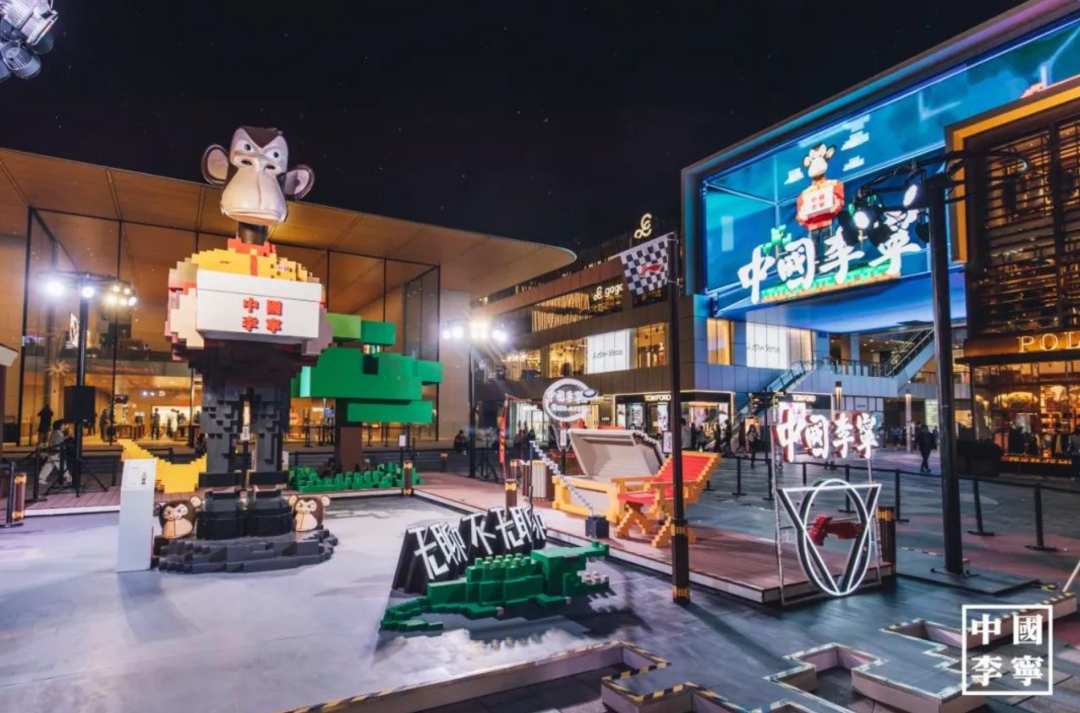
Work with NFTs with strong tags, can help brands play a greater role in brand marketing for certain special needs.
For example, NFTs like World of Women have formed very distinctive features. This set of NFTs is widely recognized for its feminism, calling for tolerance and diversity, and has assembled into a very good community culture. When a brand needs to radiate influence from female users, it is a very good choice to cooperate with NFT organizations like World of Women.
Brands can also communicate withStrongly stylized NFT cooperation, to demonstrate their own culture and values.
Web3 itself has a subversive attribute. Since NFT became popular, we have seen many NFTs with different aesthetics from the past. Many people have asked "why is such an ugly NFT popular", next time, maybe you can Explain to others—because in this new world, people have a desire to subvert past aesthetics and current values.
For example, the mfer stick figure, who seems to be drawing casually, is very unrefined and casual according to the current aesthetics; Aesthetics represents a kind of resistance to the exquisite aesthetics of the past; it is this feeling of desolation that caters to the burnout of the times.
secondary title
2) Link NFT with physical goods
Why do you do this?
In fact, many physical products are difficult to stimulate users’ desire to share. The combination of NFT and physical products can help brands promote new products, and use NFTs that match product sales to stimulate users to share on social media. The current sense of fashion and cool attributes of NFT gives consumers an opportunity to make a second display online.
A very simple example, if buying a new GUCCI bag and sending it to Moments seems a bit deliberate, it will become more natural and simple to post the NFT given by the GUCCI entity.
So how to link with physical products?
a. Package sales of physical products and NFT
b. Production of NFT-based independent entity product lines
c. Create an NFT version of the physical product
d. Make NFT the most physical product exchange voucher
a. Package sales of physical products and NFT
This shouldn't need much explanation, let's go straight to the case.
Case reference:
In mid-January 2022, Gap and artist Brandon Sines launched an NFT bundled hoodie. The physical objects are limited to 100 sets, which are divided into four levels: common, rare, epic and unique. This has also become the most limited edition clothing in the history of GAP.

b. Production of NFT-based independent entity product lines
—— Develop joint products with NFT holders
This is a relatively routine operation. For details, please refer to the cooperation between Li Ning and Boring Ape mentioned above.
—— NFT holders build derivative brands
Because holding NFT, you have the commercial development right corresponding to NFT. Based on this commercial development right, you can develop corresponding products.The well-known NFT itself has a strong potential for viral transmission, which directly has a brand effect and reduces the cost of customer acquisition.
Case reference:
Although the public's first impression of BAYC (Boring Ape) is that celebrities change their avatars, it actually brings an innovation that affects the entire NFT ecosystem-IP commercial authorization. Based on this, a large number of BAYC holders have developed nearly 80 derivative brands based on BAYC IP, including fashion brands, music, fashion games, food, beverages, skateboards, basketball, clubs, podcasts, games, etc.
The article "Yuga Labs' IP Empire: Nearly 80 Brands, Creators, Projects and Artists" written by Forj CEO Harry Liu provides a very comprehensive introduction to these 80 IPs.
(Refer to "Three Questions to Create the Soul of a Web3 Brand: Why, What, How?" Author: Star's Decentralized Brief)
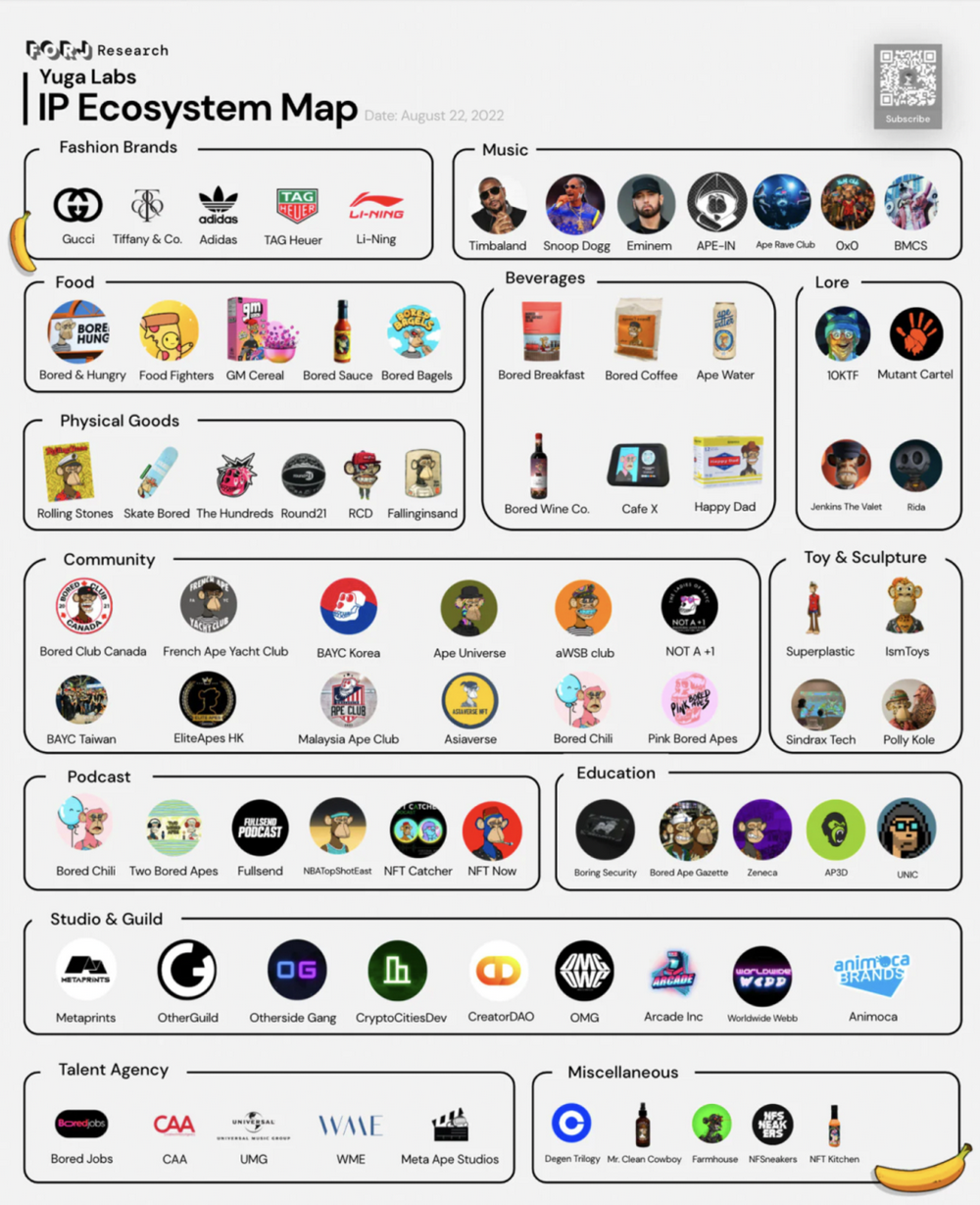
Some specific cases are also shared below.
Restaurateur Andy Nguyen spent nearly $387,000 on a bored ape and two mutant apes to decorate the store's burger boxes, fry racks and drink cups, opening the world's first "bored ape" themed restaurant Bored & Hungry. It was originally planned to be a pop-up store for a few months, but due to the booming business, it has become a long-term store.
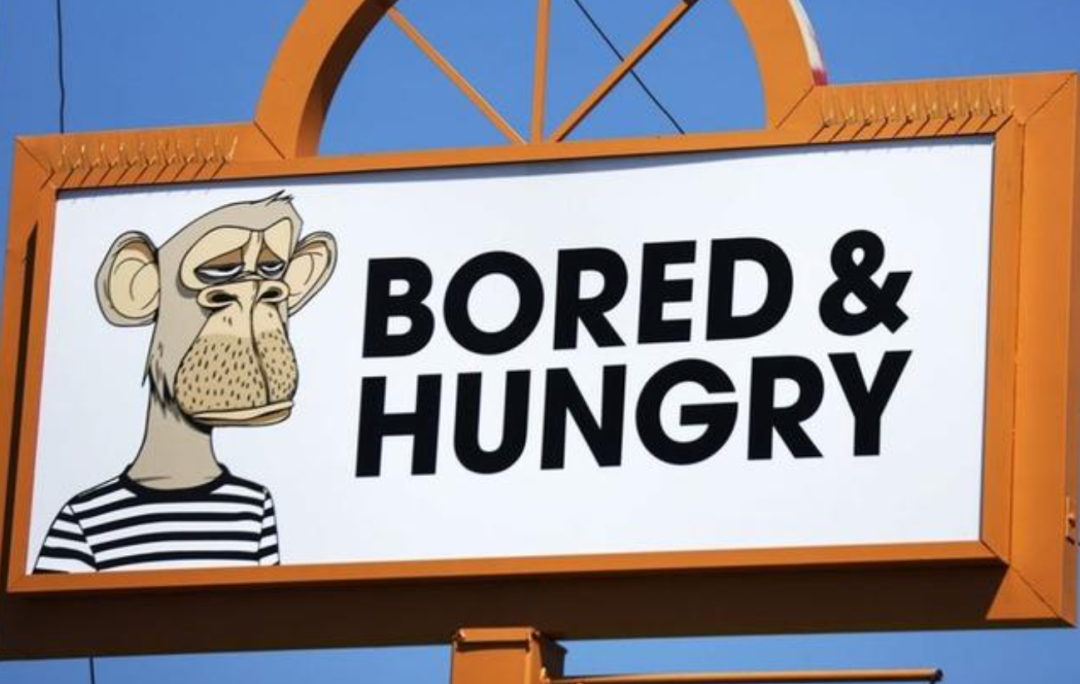

The employees of Kley, a studio in Los Angeles, love coffee. It happened that some employees held the NFT of the boring ape, so they created the "boring breakfast club" and used the "boring ape" IP to provide coffee subscription services to fans. This project also has a very interesting way of playing. They released 5,000 NFTs of the breakfast scene of the boring ape character. Consumers who buy NFTs automatically get coffee subscription membership. Ordinary consumers can place an order on the official website to purchase coffee beans and peripheral products, but only NFT holders can receive regular delivery of coffee beans (subscription service) and purchase specially customized coffee products.

c. Create an NFT version of the physical product
Separately create NFT based on physical products for sale
Case reference: Gucci, the first fashion brand to release its own NFT, launched a fashion movie NFT inspired by the Aria series on the occasion of its centenary. The starting price was $2,000, and the final transaction price reached $25,000, which is the starting price more than 10 times.
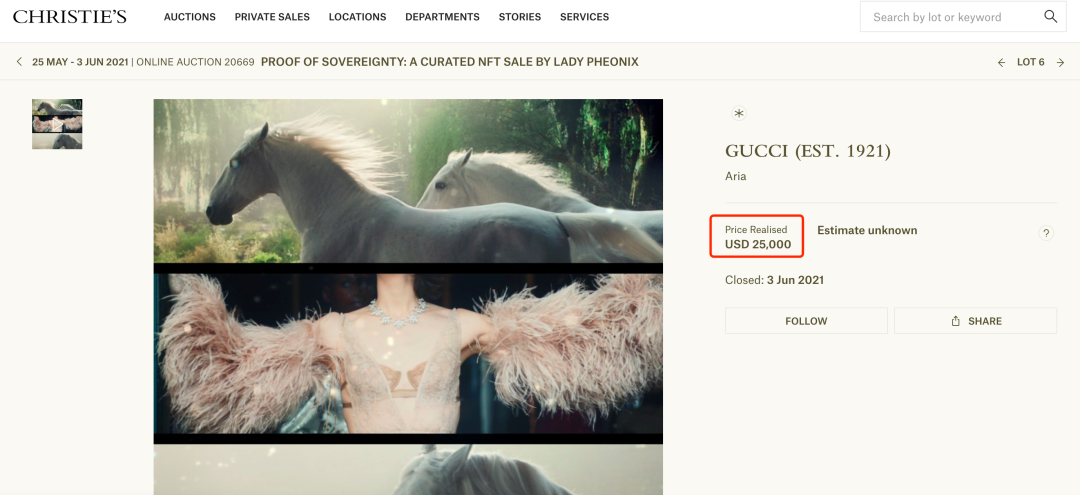
Second creation of NFT based on physical products for sale
Here is an idea to share:
Many traditional brands have actually done a lot of product iterations. For example, Coca-Cola has produced many versions of bottle designs. And these past designs carry not only the value of the brand, but also the user's emotion for time and regional life.
Brands can design and create these past physical products as NFTs for sale, allowing users to use NFTs to retain products that have disappeared in time.
d. Use NFT as a physical exchange voucher
In traditional marketing, "Mid-Autumn Mooncake Coupons" and "Yangcheng Lake Hairy Crab Coupons" are released every year. Brands can also refer to similar methods and use NFT as future physical coupons.
Case reference:
Patrón is Bacardi's premium tequila brand. In January 2022, Patrón launched its first NFT. Each NFT corresponds to a rare physical version of the exclusive Chairman's Reserve (Chairman's Reserve) physical wine-only 150 bottles in total, and NFT owners have the right to redeem the corresponding tequila physical wine at any time. Each corresponding NFT sells for 1.5 ETH (equivalent to about $4,500). The physical tequila is stored in an undisclosed location in Singapore with 24/7 security, outside motion detection and temperature control.
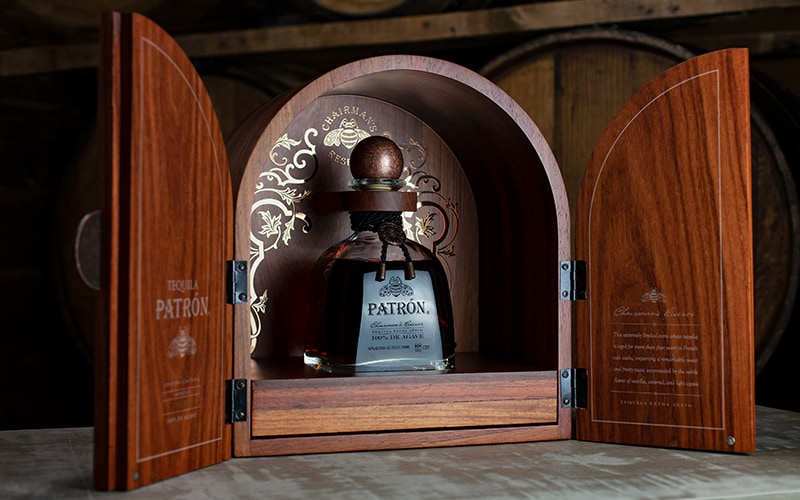
This method of NFT sales can actually be applied to all items with high exchange value: wine, tea, gold jewelry and so on. For domestic traditional old brands, Moutai, Chow Tai Fook, etc. may refer to this method for a wave of marketing to rejuvenate their brands.
secondary title
3) NFT as a member pass card
Brands can use NFT as an entrance for member incentives——With NFT, you canEnjoy exclusive physical benefits.
Endowing NFT with more member rights-maybe you may ask, isn’t this just changing the point system? But when the traditional membership system has become a relatively boring exchange of points for money, and it seems that there are not so many benefits,People have become less and less concerned about so-called brand memberships-NFT pass cards may be an opportunity to re-attract everyone's attention to membership rights.
Case reference:
The action of Starbucks is basically a similar operation method.
In the past two days, Starbucks announced their Starbucks Odyssey plan. Starbucks will set each NFT with a rare point value, which can be traded on Starbucks’ own market. Benefits/experiences include: virtual espresso martini making courses; Starbucks Reserve Roasteries activities; Costa Rica Starbucks coffee farm tour, etc.
At the same time, in order to reduce the learning cost for ordinary audiences to operate on the chain, Starbucks allows users to use legal tender to directly trade NFT on its market.
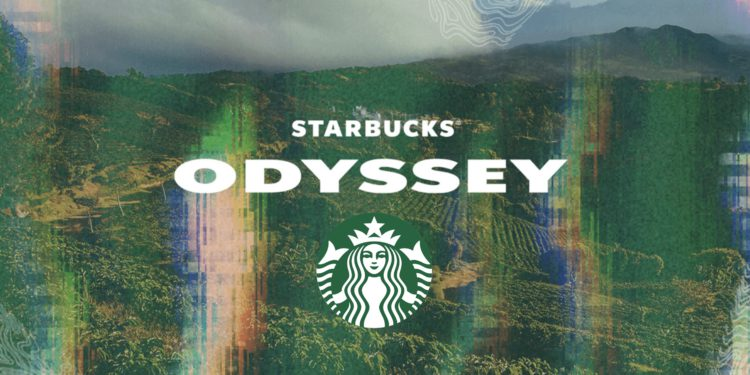
We have also observed that compared to the original method of redeeming discount points for members, the rights and interests of brand NFT seem to be more unique, rich and high-end - we can refer to the case of Prada for similar operations:
Prada launched a new Timecapsule NFT series. The new series will provide Timecapsule holders in the "Prada Crypted" Discord community with unique activities and experiences, such as participating in the Prada show in Milan and getting an exclusive invitation to participate in the brand fashion show in September.
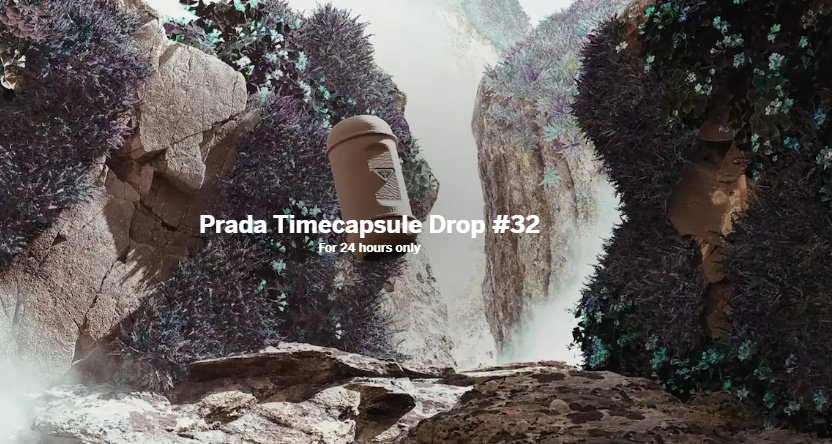
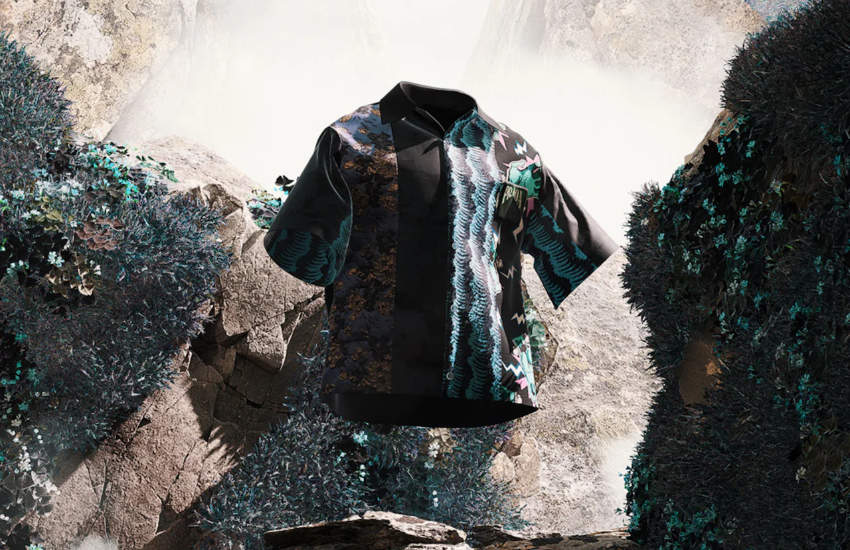
In addition, the brand can also set up different levels of NFT rights and interests in terms of specific gameplay, which is not fundamentally different from the platinum and silver cards in the past.
So can the original membership brand be converted into NFT like Starbucks?
We feel it is necessary.
For this point, we can refer to Star's Decentralized Brief's point of view in the article↓
Converting membership cards to NFT has the following benefits, including 3 user-side and 1 brand-side benefits:
User Perspective 1: Enhancing Rights and Interests
As a web3 brand, users are investors, and member clubs must guarantee high-quality rights and interests, which are consistent with the interests of users; active participation of users also enhances brand value, forming a win-win situation.
User Perspective 2: Enhancing the transaction liquidity and value of membership cards
Traditional membership cards are difficult to trade second-hand. After becoming an NFT, it will bring a natural trading market and liquidity, thereby enhancing the asset value of the membership card itself.
User Perspective 3: Obtain Personalized Identity
Incarnate as a unique digital identity to express your personality and as a passport to the metaverse. Membership cards are not necessarily static. Well-designed traits can grow with users and have special effects, increasing user stickiness.
Brand Perspective: Expanding the Depth and Breadth of Users
Based on the data and behaviors on the chain, on the one hand, it has a more comprehensive understanding of existing users (user A holds 5 NFTs), and on the other hand, it is easier to reach incremental users (users in a certain community are especially suitable for this brand).
In the way of NFT as a member pass card, there is actually a lot of room for imagination, including using poap to record consumers' participation in activities, using PFP avatars to allow consumers to make personalized displays, show identity, and so on.
secondary title
4) NFT+ games create more gameplay for brands
NFT+ games are also a good idea. Whether it is a brand making its own game, formulating game rules, or creating a brand area in an existing virtual game community, it is a way to expand more gameplay.
Case reference:
Gucci has cooperated with the game platform Roblox to create a permanent virtual world "Gucci Town" on Roblox. Despite being open for only two weeks, the Gucci Garden has more than 20 million visits.
secondary title

5) Second Empowerment of NFT - Cultivate Brand Loyalty
In this regard, we can refer to the original NFT ecological gameplay:
BAYC airdrops Ape tokens to NFT holders, and Azuki airdrops 2 Something NFTs to holders. These two airdrops have brought great benefits to NFT holders, and at the same time, NFT itself has gained a very high reputation.
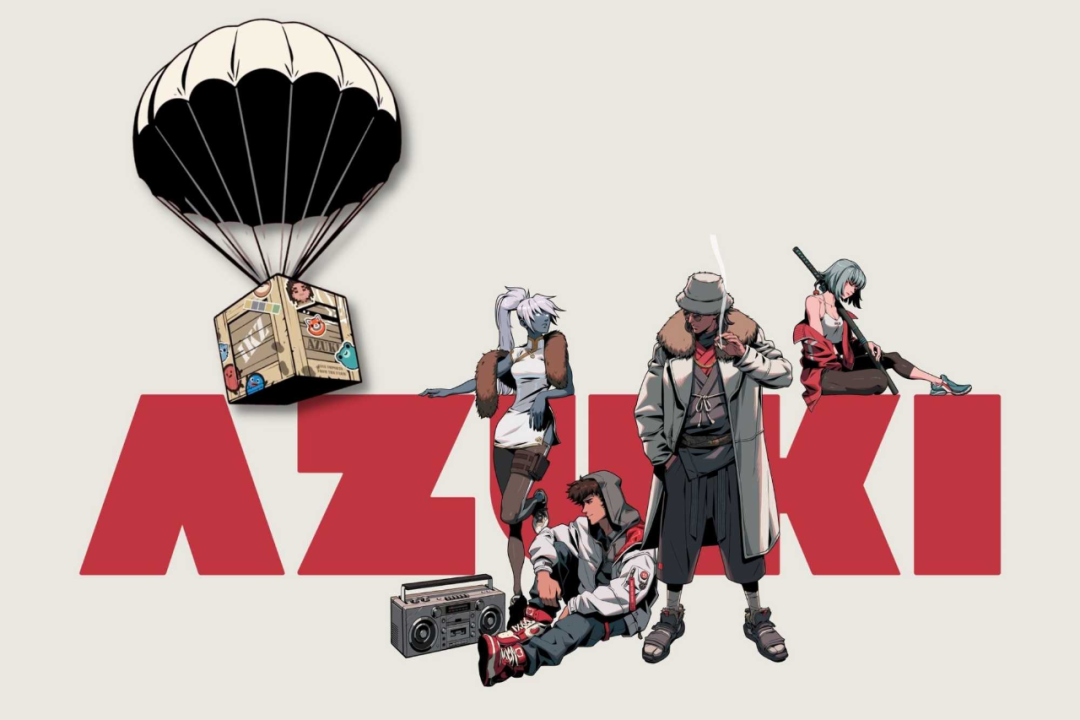
In fact, brands can also refer to this secondary empowerment method. After the NFT is sold, consumers who own the brand NFT can obtain the previously unpromised second-stage benefits.
secondary title
6) Use NFT for brand community building
The social media of the Internet has created a two-way communication channel for brands and consumers, and the NFT community-style brand community may become the next wave of new communication channels.
Brands can build online brand communities through NFT.
a. to communicate
The NFT community actually has better and more natural communication attributes. Brands can build new communication channels through NFT, and build their own new camp and new community through NFT.
This point, if you have played in the NFT Discord community/or domestic consensus NFT projects, you may be more aware of it. These communities, built due to their own consensus and love, are more active, and the tap water flow and spontaneous communication within the community will be richer. Compared with traditional WeChat public accounts/Weibo/Xiaohongshu/traditional advertisements, these communities have a higher degree of participation, no longer "I say", but "everyone say together". Compared with foreign platforms, Discord, Reddit or Telegram have greatly improved the interactivity of communication compared with traditional corporate communication social media platforms (such as Facebook/YouTube).
This NFT-style community opens up a playability for brands. For example, the AMA activities/meme expression creation often held by the NFT community, etc.
The NFT community can be an amplifier of brand marketing.
Case reference:
"Time" is a very typical example. They established an independent Web3 department to operate the community in a very Web3 way of "community + values + culture priority".
The operations of Time Magazine have already achieved initial results. Their Discord is very active, and they hold daily games, challenges and even private rooms for NFT holders on Discord to showcase the brand to Gen Z readers.

b. Create a brand story
Brands can use the NFT community to allow community members to start secondary creation around the brand image or brand story.
Based on NFT, NFT avatars or characters are used to develop stories/construct world views-this is a very common practice in the traditional NFT community.
Brands can change from writing their own stories in the past to allowing consumers to build stories together in the community.
For example: build a framework in the community, and the brand official will announce activities with different chapters and different themes: each chapter has a different gameplay, or a short story composition written by consumers, or a treasure hunt, or a cosplay of the brand image ; Let consumers get some physical or virtual rewards while doing tap water content.
Similar activities may be in traditional brand marketing, and we have seen similar actions. However, the community culture of the NFT community itself may allow consumers to participate naturally or be motivated to join. Secondly, although the number of active users in the NFT community is still smaller than that of more traditional social media platforms, they have shown a higher participation rate in the community. This high degree of participation also opens up new possibilities for brand co-building.
c. Greater imagination - Brand DAO
DAO may still have some barriers for those who are not familiar with Web3, but DAO has become a very hot concept at the end of last year.
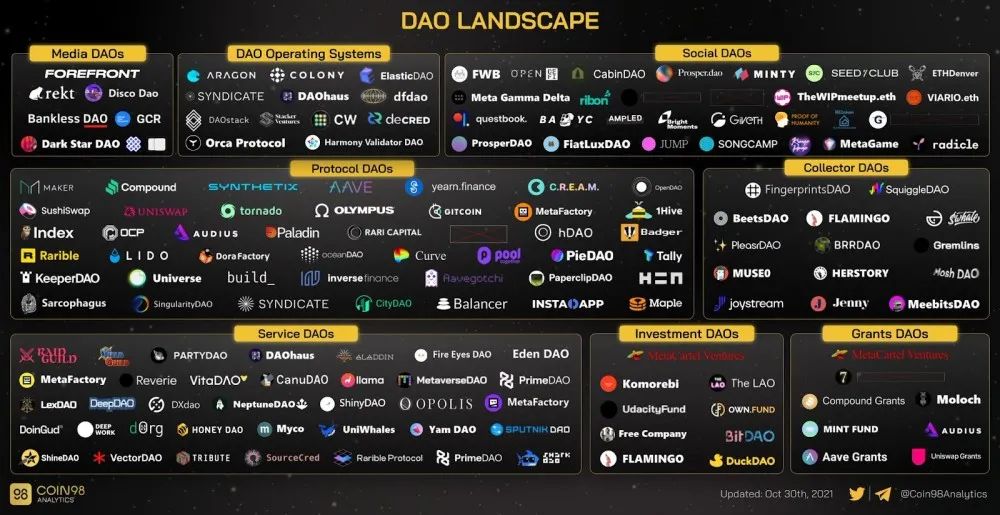
DAO is a decentralized autonomous organization, a new way of collaborative organization.We can simply understand it as an upgraded form of the community, but compared with a community, DAO has a clearer cultural identity and spiritual core, and more technical means and governance methods allow people in the community to work together and create value.
first level title

It’s time to act on NFT marketing
At present, we see that many brands have tried some NFT marketing methods. But I have to say that after studying many cases at home and abroad, we can see that most brands are still thinking about how to use NFT’s popularity to hype and treat NFT as a marketing event, and there is no understanding of the logic and logic of Web3. In-depth understanding of culture.
However, we believe that it is time for brands to make long-term planning and in-depth research on NFT and Web3. NFT marketing must not be a one-shot deal. The new world of Web3 requires brand people to look at it with a longer-term perspective.
Just like the article "Wanzi Longwen: How Web3 and Brands Promote the Next Bull Market?" "In that way:
"Today's Web3+ brand is like the impact of e-commerce on traditional entities back then. This does not mean that traditional brands will disappear, but will become a new brand industry model. Today's e-commerce has seized many traditional retail sales more than ten years ago. Market share. Web3+ brands will seize as many market shares as traditional brands or even exceed. Thanks to the well-developed Internet to build network infrastructure, the cycle of this brand revolution for Web3+ brands will not last as long as 10 years, and may be as short as 10 years. It took a few years to complete the shaping of the market structure.”
Therefore, there are two suggestions for the layout of the brand in NFT/Web3:
→ Long-term strategy
Brands need to gradually deepen their understanding of Web3 culture, and formulate long-term Web3 long-term strategies on the basis of in-depth understanding.
→Long-termization of education
Brand decision makers need to conduct long-term Web3 education from top to bottom within the team, so that decision makers understand the importance of Web3 strategy, so that every brand person involved in different aspects of strategy, creativity, design, etc. Know and understand, and be able to play with Web3.

Recently, 1.435Club is also actively exploring the gameplay of NFT+ brands. During the Mid-Autumn Festival, we cooperated with the business service company Let's Twinkle to develop NFT digital mooncakes. The digital mooncakes were designed and created by illustrator Jiaqi Wang (who won the ADC 101 Silver Award and was nominated for YoungGun 2019, currently lives in Los Angeles and New York, and works with Apple, Google, The New Yorker and other brands all the year round).

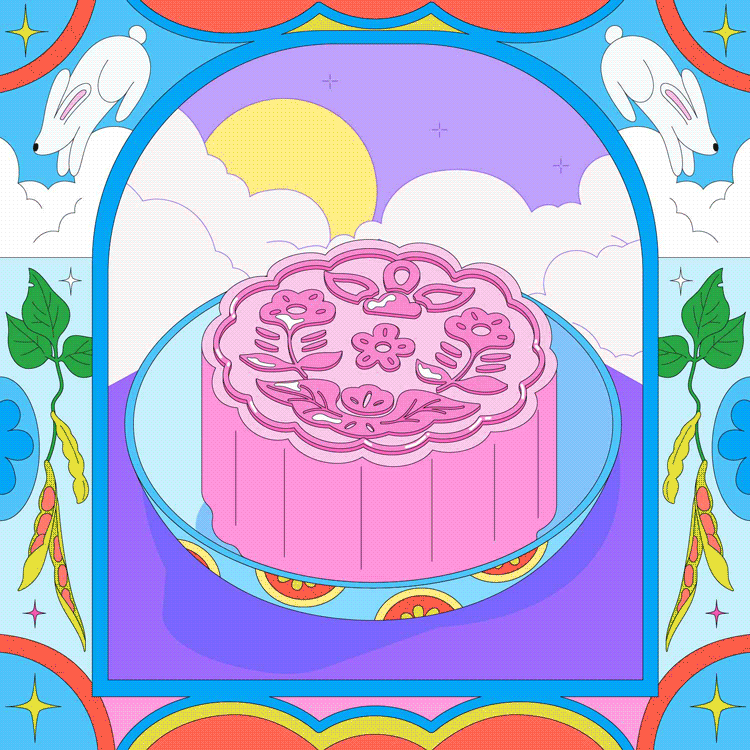
It took us only one week from finalizing the cooperation to the release of the project, leaving only two days for development. The strong execution and cooperation of the two teams allowed the work to be released before the Mid-Autumn Festival. This is an interesting attempt, and it also allows us to see the infinite possibilities of cooperation with brands.
This attempt is a heartfelt gesture for the Mid-Autumn Festival, but it is also an invitation letter sent by Let's Twinkle and us to the brand parties - we hope that those who receive it can have a very complete chain operation experience; Let more people feel the new door opened to the Web3 world.
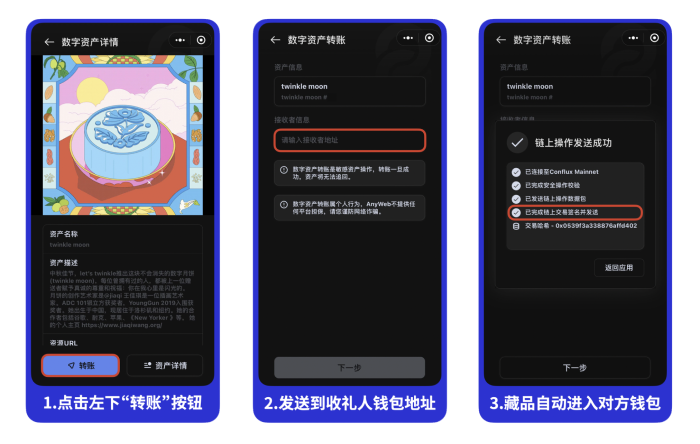
And this invitation letter also hopes to let everyone see:The world of Web3 is not so far away. We can operate a project in a very fast and lightweight way, and we can quickly let brands join this camp.
But we look forward to exploring the long-term road together with the brand and helping the brand to gain greater value in Web3 together!